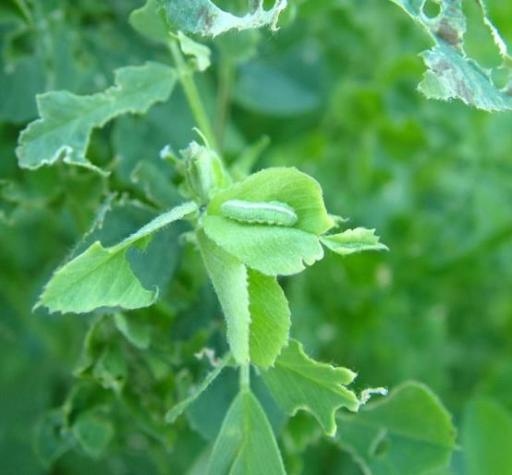JACKSON, Mo. – The warmer weather has prompted alfalfa weevil larvae to start feeding early, which means growers should be scouting the crop.
Anthony Ohmes, University of Missouri Extension agronomy field specialist, says now through April is the time to walk alfalfa fields to look for larvae activity.
“The economic threshold for alfalfa weevils is an average of one or more larvae per stem, and 30% or more of the plant terminals show feeding damage. If the field’s infestation exceeds this, it may be time to start spraying,” said Ohmes.
Choose labeled insecticides if threshold levels are reached.
Some factors can reduce the efficacy of insecticide applications to control alfalfa weevils. These include:
- Temperatures below 60 F when using pyrethroid insecticides. There are other classes of insecticides that perform better in cool weather.
- Using lower rates of insecticides when larval populations are very high.
- Less than optimal coverage; 20 GPA is recommended, as is proper tip selection.
- Possible development of resistance to pesticide; rotate mode of action being used. There are confirmed populations of weevil larvae that are resistant to pyrethroids.
Be sure to read and follow all label directions, precautions and restrictions for the product you purchase.
Another weevil management option is to harvest early.
“Remember, it is best for the crop not to harvest earlier than 7-10 days before the normal growth stage of one-tenth bloom,” said Ohmes. “This harvest could be done by hay cutting or by grazing.”
MU Extension research has found that mechanical harvesting or grazing cattle can reduce 90% or more of the weevils. If grazing, be cautious of bloat from wet foliage and damage to the crowns from trampling during wet conditions.
Photo
Alfalfa weevil larva
Later instar of alfalfa weevil larva. Photo by Anthony Ohmes.
Writer: Julie Harker
